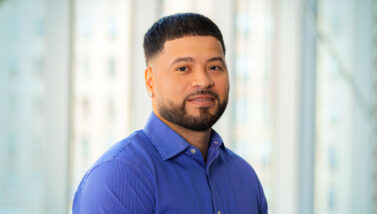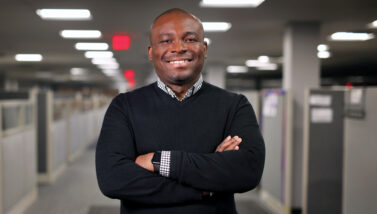Attracting More Men to the Nursing Profession

 Did you know that men have always been nurses? The first school for male nurses was established in India around 250 BCE, and documentation exists of men serving as nurses as far back as 1600 BCE and the 2nd Century CE.
Did you know that men have always been nurses? The first school for male nurses was established in India around 250 BCE, and documentation exists of men serving as nurses as far back as 1600 BCE and the 2nd Century CE.
However, many nursing organizations in the late 1800s and early 1900s restricted men from entering nursing. In their 2008 article about men in nursing, Brown, Nolan and Crawford note that even Florence Nightingale believed that “men’s ‘hard and horny’ hands were not fitted ‘to touch, bathe and dress wounded limbs, however gentle their hearts may be.’” Over time, Nightingale’s view led to the exclusion of males from nursing.
Today, men are more widely accepted as nurses. But the number of men in nursing continues to lag behind other previously single-gendered professions in achieving demographics that reflect the gender statistics of the general population; while only 10% of nurses are men, men currently make up 49% of the American population. Although the number of male nurses will increase over time, only about 20% of current nursing students are male.
There are several reasons for this, but measures can be taken to increase the number of men pursuing careers in nursing. For example, publishing children’s books depicting men in nursing, introducing men who are nurses at school career days, linking male nursing mentors to male nursing students, using gender-neutral language in nursing scholarship applications, and featuring more images of male nurses in recruitment collateral.
The mission of the American Assembly for Men in Nursing (AAMN) is to shape the practice, research, and leadership for men in nursing and advance men’s health. The purpose of AAMN is to provide a framework for nurses as a group to discuss and influence factors that affect men as nurses. AAMN is a national organization with local chapters such as the New York Capital Region (NYCR) chapter.
Membership in AAMN is open to any nurse, male or female, to better facilitate discussion and meet the most important objective of AAMN, which is to strengthen and humanize health care. To learn more, visit AAMN.org or contact Excelsior College faculty program director Mark Wahl, MS, RN, at mwahl@excelsior.edu.
References
Brown, B, Nolan, P., & Crawford, P. (2000). Men in nursing: Ambivalence in care, gender and masculinity. International History of Nursing Journal, 5(3), 4 – 13.
Kenny, P. (2008). Men in nursing: a history of caring and contribution to the profession (part 1). Pennsylvania Nurse, 63(2), 3 – 5.
Robert Wood Johnson Foundation. (2016). The changing face of nursing: Creating a workforce for an increasingly diverse nation. Charting Nursing’s Future: Reports That Can Inform Policy and Practice, 27, 1 – 8. http://www.rwjf.org/content/dam/farm/reports/issue_briefs/2016/rwjf425988
United States Census Bureau. (2014). American community survey. https://www.census.gov/programs-surveys/acs/
United States Census Bureau. (2014). Quickfacts. https://www.census.gov/quickfacts/table/PST045215/00


